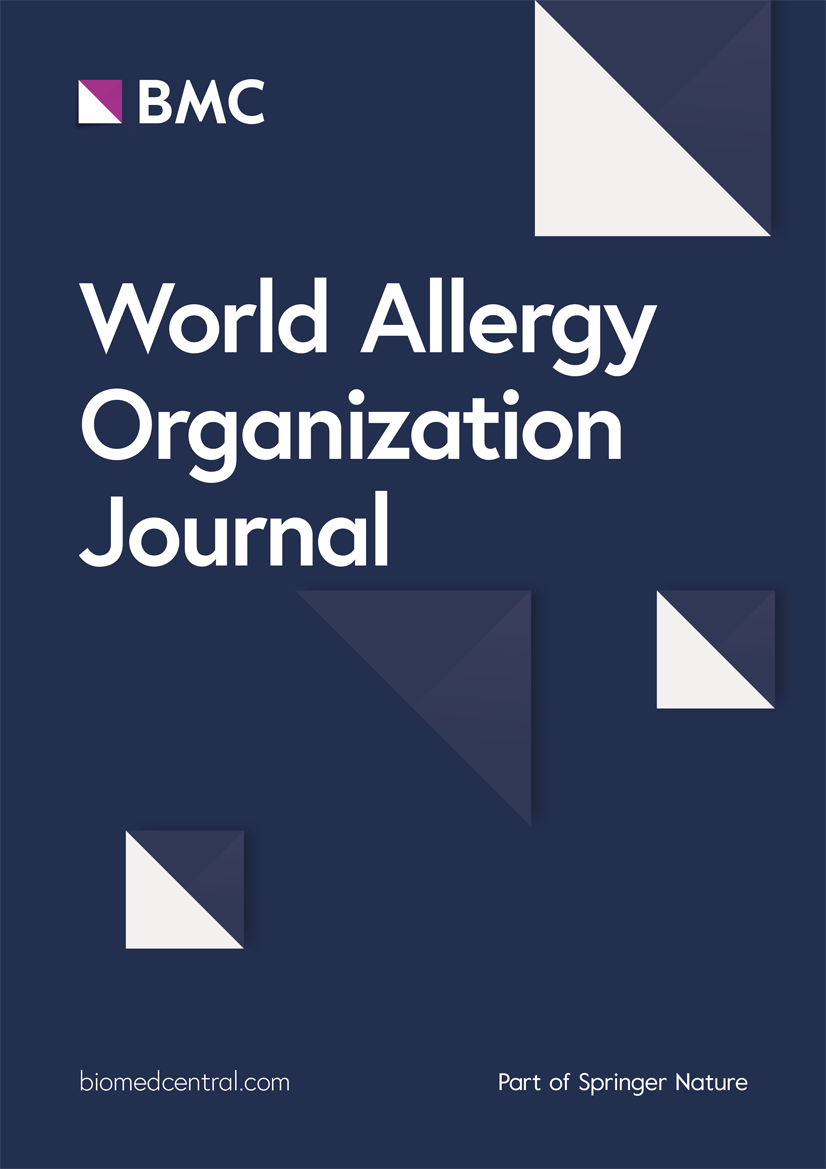18例即刻超敏反应患者的集骨化醇脱敏分析
IF 4.3
2区 医学
Q2 ALLERGY
引用次数: 0
摘要
对集骨化醇(维生素D)的超敏反应(HSRs)很少报道,其机制尚不清楚。由于没有推荐维生素D缺乏症的替代治疗方法,因此可以采用骨化醇脱敏方案。我们发现维生素D没有标准的脱敏方案。在本研究中,我们旨在研究hsr患者对维生素D的临床特征和皮肤试验结果,以及我们口服滴注集骨化醇的6步脱敏方案的有效性。方法本回顾性横断面研究纳入18例口服维生素D补充剂有hsr史的患者和计划口服维生素D替代的患者。脱敏前,部分患者用骨化醇进行皮肤试验(皮肤点刺试验和皮内试验),并记录结果。有影响皮肤试验结果的药物使用史(抗组胺药、全身性类固醇、奥玛珠单抗等)的患者不进行皮肤试验。所有患者采用一袋6步集骨化醇脱敏方案。在没有预先用药的情况下,每隔15分钟给予维生素D3溶液30滴(4000 IU)/天(1滴:3333 IU/mL的133.33 IU)剂量的钙化醇(Devit-3®,deva - t本文章由计算机程序翻译,如有差异,请以英文原文为准。
Desensitization to colecalciferol in 18 patients with immediate hypersensitivity reactions
Introduction
Hypersensitivity reactions (HSRs) to colecalciferol (vitamin D) have been rarely reported and the mechanism is unknown. As an alternative treatment was not recommended for vitamin D deficiency, a desensitization protocol with colecalciferol can be performed. We found that there is no standard desensitization protocol for vitamin D. In this study, we aimed to investigate clinical features and skin test results of patients with HSRs to the vitamin D and effectiveness of the 6-step desensitization protocol in which we applied oral drops of colecalciferol.
Method
This retrospective cross-sectional study included 18 patients with a history of HSRs to oral vitamin D supplements and patients who were planned to receive oral vitamin D replacement. Before desensitization, some of the patients underwent skin tests (skin prick test and intradermal test) with colecalciferol, and the results were recorded. Skin tests were not performed in patients with a history of drug use (antihistamine, systemic steroid, omalizumab, etc.) that affected the results of skin tests. All patients were applied an one bag 6-step desensitization protocol with colecalciferol. Vitamin D3 solution was administered totally 30 drop (4000 IU)/day (1 drop:133.33 IU of 3333 IU/mL) dose of colecalciferol (Devit-3®, DEVA-Türkiye, 15 mL/50,000 IU, 1 mL = 25 drop) at 15-minutes intervals without premedication.
Results
The patient group consisted of 16 female subjects (89%); the mean age was 46 ± 12 years. When the patients were evaluated in terms of the risk of hypersensitivity reactions according to their clinical history, 5 patients had a history of anaphylaxis with vitamin D preparations (colecalciferol oral drop, n = 3; colecalciferol capsule, n = 2), and 13 patients had a history of HSRs other than anaphylaxis with isolated cutaneous reactions (pruritus, flushing, urticaria and angioedema) (n = 11, colecalciferol oral drop; n = 2, colecalciferol capsule). Skin prick test (SPT) and intradermal test (IDT) were performed on 9 patients. SPTs and IDTs were negative in all patients. Urticaria occur during desensitization in only one patient but vitamin D replacement was performed within the following 48–72 h after HSRs. All other patients tolerated 30 drop (4000 IU) and have continued to take same dose every day for the last 6 weeks with no adverse reactions.
Conclusion
Desensitization with oral vitamin D preparations has a crucial role for patients who can not receive vitamin D supplements by other ways. Vitamin D drop forms, which are better absorbed than capsule forms which contains the lowest units per/mL without the need to dilute the preparation, not contain any additives with HSRs potential such as gelatin and peanut oil are good option. Our 6-step desensitization protocol with oral drop of colecalciferol is a reliable protocol in patients with a history of vitamin D HSRs.
求助全文
通过发布文献求助,成功后即可免费获取论文全文。
去求助
来源期刊

World Allergy Organization Journal
Immunology and Microbiology-Immunology
CiteScore
9.10
自引率
5.90%
发文量
91
审稿时长
9 weeks
期刊介绍:
The official pubication of the World Allergy Organization, the World Allergy Organization Journal (WAOjournal) publishes original mechanistic, translational, and clinical research on the topics of allergy, asthma, anaphylaxis, and clincial immunology, as well as reviews, guidelines, and position papers that contribute to the improvement of patient care. WAOjournal publishes research on the growth of allergy prevalence within the scope of single countries, country comparisons, and practical global issues and regulations, or threats to the allergy specialty. The Journal invites the submissions of all authors interested in publishing on current global problems in allergy, asthma, anaphylaxis, and immunology. Of particular interest are the immunological consequences of climate change and the subsequent systematic transformations in food habits and their consequences for the allergy/immunology discipline.
 求助内容:
求助内容: 应助结果提醒方式:
应助结果提醒方式:


